– Welcome to “University Place Presents.” I’m Norman Gilliland. When we’re walking through a meadow or a forest, a particular plant might catch our attention, and if we look farther, we’ll see that that plant is part of a pattern in nature. And if we look farther still, we’ll see some of the things that brought that pattern about. And if we continue to look, we’ll have some idea of what it takes to perpetuate that pattern. My guest has done that for 60 years. He’s also the author of the book Beauty of the Wild. He’s Darrel Morrison, who is a landscape designer. And welcome to “University Place Presents.
– Thank you, Norman.
– Landscape designer, landscape architect. All the same to you?
– Yeah, close. [laughing]
– And how would you describe it then in a sentence or two?
– Well, my brand of landscape architecture is plant community based or ecologically based use of plants in the landscape in design.
– That simple.
– It’s that simple, that short.
– You work around manmade structures when you’re doing that.
– Right, mm-hmm.
– And sometimes in extreme cases, as we’ll see. It’s one thing to be out on the prairie, another thing to be in downtown New York.
– Definitely, right. Although there are interestingly bits of prairie in New York along the High Line, which is a very famous planting, lots and lots of prairie plants on an old railroad right of way that is elevated above the surrounding city. And there are places where you can actually have native prairie vegetation in a lot of interesting places.
– Would you say that the prairie is your main focus though, as a landscape designer?
– Certainly, for many years I have focused on the prairie, but, I, obviously, in various situations I use woodland plants. I use, in some cases, dune plants. But the prairie is what I have really focused on for many years now, since I came to the University of Wisconsin as a grad student in 1967.
– You have childhood familiarity with the prairie?
– Right. I grew up in southwest Iowa, which had been prairie, part of 30 million acres of prairie in Iowa at one point, of which there’s now 1/10 of 1% remaining. And so when I was growing up in the ’40s and ’50s, the prairie was pretty much gone. But I could still take advantage or enjoy some of the characteristics of the prairie. And if I were to identify some of the characteristics that are important to me, there’s the sky is more important in the prairie than in a lot of other landscapes, because you see it full on. So the sky is important, the clouds and the movement of the clouds and the movement of the shadows of the clouds over the prairie, it’s all part of the visual aesthetic of the prairie. But also movement. The plants in the prairie are predominantly grasses. 70%, 80% of the plants are grasses and they’re very fluid. They move with the breeze, and that’s something I really like. And I also like the way they capture the light, especially backlit prairie grass leaves. It is just really wonderful.
– And you come to it honestly by a childhood in Iowa.
– Yeah, I grew up on what had been prairie land until 1837, when John Deere invented the steel bottom plow. And within two to three decades, the prairie was basically upended in Iowa. There was almost none left after that. The photograph you see now is actually a prairie preserve in Iowa. So we get some idea of what it would have been, expanded over those 30 million acres in Iowa. Since we’re in Wisconsin, I’ll mention also that there were 2 million acres of prairie in southern half of Wisconsin, along with 6 million acres of oak savanna, which is basically prairie with scattered oaks or clumps of oaks within it. And that is down to a very, very small percentage now too.
– Was that oak savanna maintained by the Native Americans in terms of burning off undergrowth?
– Right, and the oaks that survived were fire-tolerant bur oaks predominantly, or plants that were in a flood plain that was not as dry. But the Native population did in fact burn regularly to make the prairie more enticing to deer and other grazing animals. And they also learned that by burning, they stimulate the growth of the warm season grasses. The soil is darkened, so they start growing earlier and the nutrients that are put in usable form by the fire. And so they knew all that and they handled it very well.
– Wildfires, I gather, were a regular part of the prairie.
– That happened sometimes. Lightning caused fires. Then after white people entered the picture, the trains sometimes moving through the prairie would have sparks that would ignite a prairie fire. And I grew up actually a mile from a train track where there was still remnant prairie as I was growing up.
– And you were planting beans though.
– [laughing] Right.
– As we see here.
– Yeah, as we see here. I’m the one on the ground. I like to think I was close to the land very early on. But this is our very large vegetable garden, my mother’s making the rows and my brother’s there, and I’m putting in the beans inch and a half apart. And we got a tremendous amount of food. We raised essentially all of our food, either livestock or vegetable garden with a lot of flowers too, annuals.
– At what point did you think, “The prairie is all but gone and I want to do something to preserve what’s left and maybe even to expand that?”
– I guess I would have to say that the real awakening happened after I came to the University of Wisconsin as a grad student in landscape architecture. I had an undergrad degree from Iowa State before that, but there was, I’m afraid, never any mention of ecology or never any mention of native plant communities. So when I arrived in Madison, the University Arboretum was my field lab, learning about the restored prairies there, which are the earliest prairie restorations in the world, Curtis Prairie, particularly, done in the 1930s using labor of CCC people.
– Civilian Conservation Corps did a lot of that kind of work.
– A lot of good work. And when I saw the restored prairies, it just made me want to incorporate that same quality into designed landscapes other than prairie landscapes.
– One of the places that we don’t really think of prairie so much, but we have, for example, ferns. Is that part of the prairie ecology or is that more of a forest thing?
– This is where we have to really talk a little bit about plant communities. And in southern Wisconsin, we do have the prairie as a plant community, the oak savanna as a plant community, oak-hickory forest, maple-basswood forest and so forth. But in northern Wisconsin, which is where the current image on the screen is from, in Marinette County, that was almost all forested. And we’re looking at an area that is in a moist zone, a lot of moisture. And some of the plants that really thrive there are cinnamon ferns, for example, as you see in this image here. But even there, the aesthetic characteristics, the light coming through the translucent leaves is just a real attraction. And I will mention, there was an article I read about the time I came to grad school in 1976 in Landscape Architecture magazine about landscape luminosity written by a landscape architect, A. E. Bye, B-Y-E in Connecticut, and it really stuck with me, that that’s something that really enlivens the landscape. It is literally luminated by backlit leaves. And you can really use that in design. You can place plants where they will capture the back lighting at some portion of the day anyway, and it comes to life with that. Now we’ve moved on to. . .
– And I was going to say, in terms of, this certainly looks like a wetland here, wetland seems to be one of the most, at least until recently, shall we say abused forms of nature because the idea was, “Well, if it’s land, you can drain it, and use it for something else.” But then we realized eventually that it’s there for a purpose.
– Darrel: Yeah, and it does a lot of ecological services for us, certainly. The wet prairie you see on the screen is Avoca Prairie, 2,000-acre natural area along the Wisconsin River near the town of Avoca. And I learned about that when I was a grad student. And then later when I was teaching in landscape architecture at the University of Wisconsin, I took classes out to all these various communities. We did plant sampling, we learned the species composition, the patterns that occurred, and the dynamics, the change over time that might occur in different areas. And all the time, I was just thinking how beautiful those landscapes are and how limited so many designed landscapes are with their lawns and clipped hedges that never change, don’t capture the light, don’t move in the wind. [laughing]
– Not too attractive to wildlife either, usually.
– Not very, no.
– They’re closely clipped.
– Right.
– One part of Wisconsin that if you look at it first glance you think, “Oh, how primal, the forest is here,” but then you start looking at some of the history and it was a lot of a clear cut.
– Yeah, well, in northern Wisconsin, certainly it was almost all forest. There’s a line that goes basically from Milwaukee to Minneapolis, and above that line was predominantly forest everywhere. In southern Wisconsin, there were forests on areas that did not burn, like northeast slopes, which might develop into a maple-basswood forest.
– Too hard to get to.
– Right. And there’s a great example of that in Abraham’s Woods, about 40 miles from Madison near Albany. But then there were oak-hickory forests, which mostly developed where there had been oak savannas, where there had been isolated bur oaks or clumps of bur oaks. And when burning stopped, when natural fires were stopped, then those oak savannas became oak-hickory forests for the most part, and that’s. . .
– That’s another philosophy that has changed in the last, I don’t know, 30, 40, 50 years is the idea seemed to have been, if there was a fire, you put it out.
– Right.
– Only you can prevent forest fires.
– Right. [laughing]
– But now if you go to a place like Yellowstone, the inclination is more of, certainly, if it’s a naturally occurring fire, just to let it burn out and then regenerate as it has been doing for thousands of years.
– Right, and one of the problems with big forest fires now is that they have not been burned periodically. They’ve been protected from fire, which means there’s a whole lot of fuel there when there is a lightning strike or a cigarette, a match or something that ignites it.
– And here’s some of the regrowth that we were talking about in Door County. And is that pretty much just allowed to grow then and the deadwood in the forest allowed to stay there for habitat?
– Darrel: In many cases, yeah.
– Norman: So again, this is near Ellison Bay, this particular place. And we’ll bring up another one too, which is a very different kind of habitat, but also in the Ellison Bay area.
– Darrel: Right. And both the previous image and this one are at The Clearing, which was a school that was started by Jens Jensen, landscape architect who worked in the Chicago parks. And in 1935, at the age of 75, he moved to Door County, Ellison Bay, and on a 128-acre site, he developed the “school of the soil,” which was available to landscape architects or other people who wanted to learn more about the landscape. And I taught there actually myself after he had died. I started in 1973 and I taught there for 30 years for one week each summer, over a 30-year period. And then I went back in 2017, 2019, 2022 to teach the one-week course. And in that course, we visited natural areas. We certainly enjoyed the Clearing itself, which is just a demonstration of different plant communities and different micro habitats. But one of the places I really enjoyed was Toft Point, which has virgin pine forest on it. It was protected by Miss Emma Toft and her family, and is now a state natural area.
– And subject of a work of art.
– Yeah, sort of. [both laughing]
– This is one of your own paintings.
– Darrel: It is; one I did during one of my one-week classes up there, sitting on the rocks at Toft Point. Did this little painting.
– Norman: Particularly satisfying, I’m sure.
– Absolutely.
– To be able to know what exactly you’re painting and all the details behind it.
– Darrel: And one of the themes that this book reminds me of that runs throughout the whole book is the importance of protection of natural areas like Toft Point because they’re disappearing and when they’re gone, you’ll never get the whole community back again. You may get parts, but it’s never the same. And so the need for protecting natural areas, everything from one or two-acre forest, in some cases, to 400,000 acres of the Okefenokee Swamp, which FDR saved.
– As well as Olympic National Park.
– You’re right.
– Was FDR.
– So we need all of them. But if we don’t, we lose species, we lose habitat, we lose a lot.
– I guess one of the. . . Not to digress too far, but one of the largely unsung preservers of nature was President Grant.
– Really? I didn’t know that actually.
– Well, he had witnessed these wonders in the West as a young man, and so Yellowstone was essentially the idea of U. S. Grant, I believe. And so you never know who you’re gonna run into, who wants to save these things.
– But another way of saving species is to provide new habitat for them or to restore natural areas, like the Arboretum did in Curtis Prairie. And on the screen now, you see one of my early efforts at restoring natural diversity to a site where it had been destroyed through decades of farming. And now in 1974, it became a corporate site, General Electric, and they had 80 acres and came to me to recommend how they might restore prairie and manage it once they have planted it. And this is early in that evolution, and a portion of that site, plants that are maybe four years old. And we did employ the same management technique that Native populations had used for centuries, namely the use of fire, which does many good things, darkens the soil, it puts nutrients back in a usable form, it gets rid of standing dead material, and it would burn off invasive, exotic woody plants that would be the end of the prairie if they were permitted to grow. So they do many things, and they’re quite a lot of fun too.
– [laughing] If done right, yes. You do have to be very careful even as to what fabrics you wear when you do a controlled burn, don’t you? No synthetic fibers
– Right, they might melt.
– They might melt right on your skin, which is not part of the plan. And some of what we have been seeing here is in the area of Pewaukee, but now we’re jumping quite far afield, as your career has moved around quite a bit in the country over the years.
– Right. Yeah, I’m a migrant worker. [Norman laughing] But anyway, yeah, in 1983, I made a big move from the University of Wisconsin to the University of Georgia. And here we see a Georgia landscape that I came to really love. Initially, I have to say I felt a little guilty leaving the prairie, like I was abandoning my first love.
– Norman: Well, the work is never done.
– Darrel: Right. [laughs] But then I was in the South, realized there were a lot of wonderful grasslands or grass-dominated landscapes, like the longleaf pine/wire grass community you see here. This is a protected area that’s been protected for decades now. And it’s the most diverse plant community in the southeastern, maybe in the country, 35 or 40 species in one square meter. Compare that with our gardens where you have, [laughing] five in an acre.
– That is phenomenal. In a nutshell, what would’ve been the history, the fairly recent history of this? Because those trees don’t look particularly old, or is that just the, far as that they grow?
– Yeah, some of the trees in this stand, which is a place called the Big Woods, are 400 years old. And so I like to point out that some of them were 200 years old when Beethoven wrote his fifth symphony. So they’re old trees.
– Norman: Another person who was very influenced by nature, Beethoven.
– Right, Right.
– Now onto one of my favorite places in a minute. But first, well, actually North Carolina is a favorite place too. This is a little different though. This is more of a mountain atmosphere that we’re looking at.
– Darrel: Right. This is a, quote, “grassy bald,” B-A-L-D not far from Asheville, North Carolina, just off the Blue Ridge Parkway, Black Balsam Gap. And they’re sort of mysteries. They’re treeless, basically, but yet they’re not above the theoretical treeline. But for reasons that are too complicated to go into here, some of them did remain as grasslands. And here we see one of the beautiful ones that I used to take students to from the University of Georgia, where I went after I left Wisconsin. And it’s just a wonderful, exciting experience to be there, especially when there’s a wind. Then another grassland is the one you see on the screen now.
– Cumberland Island.
– Cumberland Island, just off the coast of Georgia.
– Norman: Quite an environment in its own.
– Darrel: Absolutely. This is a salt marsh, which is very non-diverse species-wise, two or three species of cordgrass dominate the grassy areas. But it is just a beautiful composition. And as a designer, I like to look at the mass and space relationships, space being represented by the water.
– Norman: Which reflects the sky.
– Darrel: Yeah, right back to the prairie again.
– And of course, in other parts of Cumberland Island the wild horses add an element of charm.
– Absolutely.
– Slightly exotic effect.
– Right.
– Norman: And we’re remaining in Georgia here, and this is a rather curious combination of features.
– Darrel: It really is. This is a granite outcrop, and it’s a hundred-acre site that was acquired by the Nature Conservancy close to 50 years ago now. And it is this almost moonscape initially.
– Norman: I was gonna say, yeah, moonlike.
– Darrel: With granite, with mosses and lichens. But then these ephemeral pools with extremely rare plants. There’s the red-leafed one you see here, is diamorpha or. . . Can’t think of a common name. Anyway. [laughing] But I love the aesthetic of these. And obviously they dry out and then the plants disappear, and then the water comes and plants reappear.
– And so it has this fairly tight cycle, it sounds like.
– Right, right. And this will never, I mean, overall, it will never become a forest, even though, in theory, plants succeed into the next generation. But the granite outcrops will always have exposed granite, I believe.
– Which things can’t grow on very quickly.
– Right, but they can be an inspiration for a design.
– Well, speaking of inspirations for design, at some point you do have to sit down, pen and paper and sketch out how you’re going to shape this chosen area, wherever it may be.
– Mm-hmm, and I like to think of looking at a natural community and determining what the key species are, the most abundant species, the most dominant species, and the ones that I call visual essence species, the ones that are particularly characteristic of that environment. And on the screen you see a 34-foot-diameter circle, the center of a entrance parking area for the Museum of History in Atlanta. When I did this sketch, I was really puzzling over how to do that circle, how to design that circle. But I wanted to represent the granite outcrop because the museum itself is on a site that had been a granite quarry at one point, and we were working on a full sun area, which is like the granite outcrops. And I got inspired on a flight from Czechoslovakia to New York, I think, under the influence of a glass or two of wine. [both laughing]
– Norman: Never know where inspiration will come from.
– Darrel: Anyway, I started doing this sort of spiral pattern and thinking of what would be stone, what would be little miniature granite outcrop plants and what might be a granite outcrop crop tree. And here you see the finished product at the Museum of History in Atlanta as it looked in the late 1990s.
– Norman: So if we had an overview of this, it would have that spiral effect to it. – Darrel: This is the landscape that emerged from that spiral on the napkin. And the tree here is a Georgia oak, which is endemic to granite outcrops. It’s about the only place it will grow. And so I felt it was really important to have that representing it. And then the lower vegetation, the senecio with the upstanding leaves and then the mosses and lichens are so characteristic of that landscape. And I thought, “How great. We can bring it into Atlanta where people who might never, ever see a real granite outcrop will see this as an example of what you can do. And it, I think, fits into the urban environment pretty well.
– I would say; and it must be very satisfying though, to take a sketch on a napkin and then turn it into something like that.
– Right, with the help of some really good stone masons and other people. [laughing]
– But, yeah, to have the imagination take form like that that.
– It was fun, yeah.
– Well, here’s another example.
– Darrel: Yeah, and this is one of my favorite designs in the whole world. This is the Native Plants Garden at the University of Wisconsin Arboretum. And again, referring way back to 1967, when I arrived for grad school at UW, I saw Curtis Prairie and was just really inspired by the aesthetics of that. And then when I started teaching and teaching field classes in Wisconsin for a number of years, many of them with Evelyn Howell, an ecologist, I learned the different communities. And fortunately for me, the criteria for the Native Plant Garden at the Arboretum was that we represent, in condensed form, 11 different southern Wisconsin plant communities. So we go all the way from wet-mesic prairie, intermediate prairie, to dry prairie, and we have bur oak savanna, black oak savanna, oak-hickory forest, maple-basswood forest, and almost all of them have some reference in my mind to places I had been, sites I had visited over those many years of teaching in the field. And the slide on the screen right now is maybe my favorite view in the Native Plant Garden at the Arboretum as it exists now. And if you were to go out there today, literally today, you would see this scene pretty much from a half circle, half council ring that I designed into it. 20 years earlier, there were no trees, basically on the right-hand side. There were a few trees on the left-hand side, but we put in little bur oaks, two-inch trunks, and now those bur oaks are 10-inch trunks.
– Norman: They do well, don’t they, those bur oaks?
– Darrel: Yeah, it always gets me, people say, “I will never plant an oak. It won’t get any size while I’m still alive.” Wait, these are 18 years old. [laughing]
– They do well. How big a space are we talking about with that garden?
– It’s four acres total. And here we’re in the area, quote “behind the visitor’s center,” which is basically two acres.
– In the course of planting all these things that you want there, presumably you’re taking out invasive species.
– Right, well, certainly. And in the case of the Arboretum, a portion of the scene that you just saw of the prairie was a gravel parking lot 25 years ago.
– And you could argue that that’s an invasive species.
– Yeah, definitely. [both laughing] But I was given a list by the Arboretum scientists of the species they would like represented in the gardens. And in those 11 different communities, there were close to 400 species that they wanted me to incorporate into the design. Usually a designer does the design and then he picks the plants to match up with it. I had the plant list before I had the design, so I had to put them in places where I thought they would do well. So I spent a couple of weeks out there actually learning the different micro habitats in the summer of 1997. Plus I had all these references to places like Avoca Prairie and various other sites that were very helpful in matching plants with habitat. And then we created some new habitats with, for example, wet areas, rain gardens if you will, where roof rainwater drains into a lower area. So you get wetland vegetation grading up into wet prairie, into drier prairie, all in one composition.
– And you have to manage that too, though, to see that the garden doesn’t overspill its plan.
– Well, basically, we have what’s called the wetland continuum garden at the Arboretum, one of those drainage areas, and we tried to match the species with the degree of moisture we expected in the different concentric rings. – So it’s kind of self-defining then.
– It’s self-defining. And then there’s a little bit of give and take always, plants that you plant, some will move a little more, but they migrate, which makes it really exciting because it’s not a frozen composition; it’s always evolving.
– Takes on a life of its own.
– Absolutely.
– Now let’s go to New York again. Go back to New York
– Back to New York.
– And say, yeah.
– Okay, yeah. This has been a lot of fun. Way back in 1996, the director of Storm King Art Center, David Collins, invited me to come up to the sculpture park in the Hudson River Valley. They have 500 acres and 300 of them are wooded, but 200 were open and they were mowing 200 acres of lawn basically every week. [laughing]
– And what’s wrong with this picture?
– And so David Collins and the previous landscape architect, David Rutherford, asked me to come in and propose native tallgrass plantings. And these are native to New York, they’re not just Midwestern plants, but they’re native to New York, to that part of New York. And here, you see about four years ago, I guess, what it looked like with the islands of tallgrasses that have all the qualities of the prairie, the movement, the light capturing. They burn regularly, which is such a good practice.
– Norman: So you built the mounds on which we’re seeing the tallgrass?
– Darrel: Well, those were preexisting, but they had been mowed before and we made them much more sculptural, if you will.
– Put them to good advantage.
– Being a sculpture garden, it to me feels like the whole landscape is sculptural with those additions.
– Norman: And here’s another plan of yours.
– Darrel: Another plan of mine, and this is in the Bronx of New York. There was an old stone mill, the P. Lorillard Snuff Factory Mill existing on the site. And in about 19. . . Excuse me, dropped a century. [laughing] In 2010, they wanted to do a native garden adjacent to the old stone mill. And this was a great opportunity to put things together in community groupings. I guess my subtitle for this composition was “Rivers and Drifts. ” We had rivers of space moving through it, low vegetation, but then I had areas that were canopied with tree cover. And so I had the drifts of trees and they’re coming down from the top there, gray birches, 55 of them in sort of directional drifts. And then there’s a pinkish area in the drawing that was a low growing area with little bluestem grass, butterfly weed, and herbacious things. At the bottom, next to the Bronx River, there were flood plain trees and shrubs and wet-tolerant ferns. And so it became just a whole composition of micro plant communities on, again, acre and a half site, probably.
– And those were all plants that had been growing in what is now the Bronx, for a long period of time.
– Yeah, certainly. There’s a great book. So we had that to refer back to. And so basically everything in my plan would’ve been in the book on the vegetation of Manhattan 400 years ago.
– Wow. And you don’t have to just literally start from scratch by digging up whatever soil is there with whatever would’ve leached into it in 400 years and somehow starting all over?
– No, we didn’t start all over, I have to say. We basically looked at what was growing there, and a lot of it was mainly invasive species that we didn’t wanna keep anyway. But in this slide, you see the drifts of gray birches, which are, quote, “an early successional tree that comes into open fields” in that part of the country, and then later is succeeded by oaks and hickories and maples.
– Norman: Birches are often first, aren’t they? True in Wisconsin too, right?
– Darrel: The same thing in Wisconsin. They are the pioneers that come in first and create a habitat that is good for other species as well.
– And what can you tell us about the old stone mill? What a fascinating site.
– Yeah, well, it had been built, I think in the mid 19th century and was an active mill where snuff was created. [both laughing]
– Norman: I guess it had to be done somewhere.
– Darrel: But it’s a beautiful stone building. And again in 2010, they did a rehab of the building, restoring it to its earlier splendor and wanted a landscape that would be matched with the building. And this is what we did. You can see the patterning in the lower part of the illustration too, where we have drifts of ferns, for example, drifts of sedges and various grasses. I think there are 45 species in this garden, which is not a whole lot, but it’s better than the two or three that might be in a lot of urban landscapes.
– So what would that picture have looked like then before you got there?
– Before I got there, it had two sycamore trees on it. It had a dying ash tree and lots of Japanese knotweed all over it. So it’s a whole lot more diverse now with its 46, 50 species and it will continue to change. I was there two years ago, a year and a half ago. And in the lower, more open area there has been the invasion of some trees, some spreading through ones that we already planted, but also some that have been brought in, and not all of them are native. And so we kind of developed a policy that we will eliminate the non-native ones that have invaded, but we will let native species like sweet gum and black gum increase because they are native to the area and it’ll be a changing composition. Again, change over time I think should be one of the characteristics of the landscapes we experience.
– And that change in part though has to do with competition among the species that you put in?
– Competition, yeah. And in some cases, cooperation between them. [laughing] But I do have this sort of mantra that a landscape that we design should be ecologically sound, things should be matched with the habitat, should be experientially rich, there should be colors, textures, and movement and all those good things. Should be of the place; we should know where we are when we are in a landscape, and they should be dynamic, they should be permitted to change. We don’t want to freeze it at a certain composition, but let it evolve.
– What kind of change do you see, for example, in the old stone mill site in terms of the fauna that come in, the wildlife?
– Yeah, good question. I will mention, an hour and a half after we planted the butterfly weeds among the little bluestem in this illustration here, you might even see a glimpse of orange. We planted the butterfly weed as plants and it had orange flowers. And within an hour and a half, monarch butterflies were coming in.
– Norman: That’s phenomenal.
– Darrel: The word got out. [laughing]
– Norman: Very quickly.
– Darrel: And I don’t know much about larger fauna in that site. It is in the Bronx, [laughing] but there certainly could be beavers and other species. But I haven’t kept track of that. This is in the same garden, looking down from inside the stone mill, from the second floor looking down over a drift of blue woods phlox with some flowering dogwoods. And that woods phlox is exhibiting what I like to see in my landscapes, namely a concentration of plants and then they trail off and they fade into the background. Then another species picks up, this sort of relay that goes on.
– And these plants do, as you say, feed off of each other in some symbiotic ways.
– Some do, and they migrate within the composition. It’s pretty fun.
– You must have wished often that you could almost see a time lapse.
– It would be nice to do, yeah. Somebody should do that. [both laughing]
– And see quickly, in glance, how these changes come up. Did you have any surprises in terms of the way these sites developed?
– Always. [both laughing] Some things spread more than you think they will and some things diminish over time. And then things that come in either with the wind or animals surprise you sometimes. And sometimes you edit them out, sometimes you let them remain, and I don’t feel that the composition has to be my design forever. I think I cooperate with nature, nature cooperates with me.
– You kind of steer it off in a certain direction and let it take its head.
– And that’s fine.
– So what is a pine barren exactly? The name, when you say it, doesn’t sound very enticing, but what is it?
– Well, pine barrens, they were abundant in New Jersey and on Long Island historically and
– The New Jersey one very famous, being a vast one I guess.
– There’s a very large preserved area of the pine barrens in New Jersey and they’re really distinctive. I love them. They have very, very sandy soil, of course, and they have a array of species that is different from any other that I know, which made it a lot of fun to do a pine barrens garden at the Brooklyn Botanic Garden. And I went on field trips with Uli Lorimer, a botanist at the Brooklyn Botanic Garden. He taught me a lot about pine barrens. But the main tree species is the pitch pine, which is often very picturesque, growing with the limited resources of a pine barren. Then there are low growing plants, many of them, and some that are intermediate growing. In the slide you see on the screen now, there’s butterfly weed, the orange flower that brought in the butterflies at New York Botanical Garden, and it’s very much native in the Midwest as well. There’s a yellow baptisia there, and then a whole array of grasses and even ferns that are associated with it. But in the truth, pine barrens, there’s often a lot of bare sand, and we brought in tons of sand into the pine barrens portion of this garden. But once the plants get through the sand to the more rich soil beneath, they get a little bigger than they do in the pine barrens. One of those surprises. [laughing]
– I’m surprised you had to bring in sand. Had it all just leached away somehow?
– Well, it had been gardened with loam and there’d been compost added. It was a very modified environment. And we were in the somewhat unusual situation of wanting to de-enrich the site to make it less inviting to plants that we didn’t want and make it more appropriate for the pine barrens plants.
– Do you have a philosophy of yards, let’s say in Wisconsin or anywhere else for that matter?
– Yards?
– Yes, just yards. Like to mow, not to mow, or plant, not to plant. What are your feelings?
– Oh, boy. [both laughing] I think we could probably do with 80% less lawn. I understand there times you wanna play croquet and you may want people on the lawn, but most places have way more lawn than is used for lawn purposes, and those same areas could be converted to prairie gardens, plants that would attract all sorts of other forms of life. And interestingly, the presence of other forms of life makes it more rich for the human experience.
– More to look at.
– More to look at, more to just enjoy on a regular basis. And mowing is so fruitless. [laughing] You mow. . .
– A week later, you’re gonna have to mow again.
– Many people mow, fertilize, water so they can mow more.
– Yeah, that’s so true.
– Over and over.
– That’s so true, yes. Sort of a self-perpetuating cycle.
– Certainly the Arboretum here provides examples of what you can have instead of that. Even at the visitors’ center at the University Arboretum, there’s a circle out front, which is relatively low growing prairie plants. They’re probably 30 species within it. And it’s always changing, always moving. And, to me, that’s a model of what many people could do with the sunlit portion of their yards. Obviously, prairies belong in the sun, they don’t belong in the shade, but in the shade you put in ferns and things that will grow there.
– And you just let it go, or is there some maintenance required for that? You’re still gonna have some invasives, I suppose.
– Yeah, you often have invasives. I tend to be a little looser about management, maintenance, but certainly one could do management so that it looks more manicured. But within the islands of wildness there can be all this life, which adds so much to it.
– And I gather from what you’re saying that even a pretty small space can still take on a life of its own and bring in some of the species that had left.
– Absolutely, yeah. This is an extreme case, but I live in a condominium in Madison. I have a 260-square foot terrace at the second floor level, and I had some cedar planter boxes built that I have lined up on the edge. And I have probably 25 species of prairie plants along with some herbs. People ask me sometimes, “Would you ever plant a non-native plant?” Well, of course; I love tomatoes and basil. [laughing]\
– Yeah, they’re not exactly native to Wisconsin, are they?
– But, literally, I sit on the terrace looking west and I see the little bluestem waving in the breeze between me and Midvale Avenue. [laughing]
– That’s something to be said.
– Midvale Boulevard. Yeah.
– Couple more looks at the pine barren here. This is a bog, a pond/bog combination here. And had this been pretty much left as it was or had parts of this been filled in? Or what’s the story?
– Darrel: Yeah, this had been lawn. [laughing]
– Norman: Lawn, really? [Darell laughing]
– There was a low point on the site, but we made it even lower, created the depression so we could have the pond, which there are ponds and bogs in pine barrens in addition to the pines and the drought-loving plants. But here we purposely wanted to have the whole array from very dry to very wet. And then the boardwalk of course makes it accessible to thousands of people. I love the design of it too. I did the basic form, and then one of my former students actually, Annette Wilkus, who’s a graduate of the University of Wisconsin, her firm did the detailing for the walkway over the wetland. Then on the slope to the left above that, we go into plants of the Hempstead Plain, another diminishing natural area. On the Hempstead Plain, there were once 50,000 acres of tallgrass prairie.
– In New York State?
– On Long Island. Yeah.
– Wow.
– And they’re 38 acres remaining of those 50,000, and it’s not in very good shape. [laughing] But anyway, here we’re back in Brooklyn in the pine barrens portion. And I really like this photograph taken by one of my former students, Nancy Aten, because it shows how you can have beautiful, rich colors in the winter. I love the little bluestem with the orange color and the pearly everlasting with the silver color, with the young pitch pines, which are already much bigger than that. Here we have sort of an iconic house in Wilton, Connecticut, the Round House. But what I love about this is how the client, the owner of the house has converted basically a six-acre lot that had been predominantly suburban turf grass and clipped shrubs to a wild landscape. And it’s been a bit of an effort to convert that. But look what you get: You have this sea of flowers, and with that comes a whole array of birds, butterflies, insects, bumble bees. It’s just a wonderful thing. And the client herself has been so involved in this and has learned a lot, and she could actually do it without me at this point. But I just love the example of what one can do. And it doesn’t have to be a six-acre site as is the case here. It could be a half acre certainly. And just last week she sent me a note, she’d been on a neighbor’s property with its clipped hedge and turf. She said, “It’s a dead place. There are no butterflies, there’s nothing happening.” [both laughing]
– Well, with a round house, you do maximize your view of those things that you’ve changed, don’t you?
– Right.
– And with the clipped lawn and all of that, it makes me wonder, you’ve talked about some of the places like in the Bronx that were lawns, how does this property come into a position where you can actually restore it?
– Well, in this case, we cultivated the lawn, basically, disked it, and then we seeded with a diversity of native species, including some that are very, quote “early successional.” They will start right off, and this is an early successional view, with monarda or bee balm really abundant. But then we have with that, perennial grasses that will come up and follow it. And there’s sort of an adage among meadow prairie people that the first year it sleeps, second year it creeps, third year it leaps. And it’s pretty accurate. By the third year, it looks like a prairie or an eastern meadow in that case. But again, one can mow a little bit and it shows that there’s intent. It’s purposeful to have the tall things because you have the mowed area around it. And this lawn has no chemicals used on it, by the way. And as a demonstration for other people, I think it’s just wonderful.
– So is that true? Unlike the mowed lawn that you were mentioning earlier, if you have one of these prairie restoration sites, you never have to use chemicals to get rid of pests or somehow encourage the growth of what you’re putting in there? How does that work?
– Well, essentially, true confessions, there was a point about 20 years ago where I did apply some Roundup.
– That’s the first thing I was thinking, Roundup, the
– But I won’t do it.
– Much maligned Roundup.
– As it should be. [both laughing] I will never use it again.
– Weed killer essentially, just a weed killer.
– Yeah, I mean, one can cut weeds and one can cut them at the ground level, and if you cut a lot of weeds two or three times at the ground level, they give up, they use up all their energy. and you don’t have to use chemicals. [laughing]
– And the other things will presumably edge them out anyway, if they’re reduced constantly.
– If you’ve introduced propagule seeds, tubers, plants into that area, there will be something to occupy the space. And there are cover crops one can use also. There’s a great annual called partridge pea that I really like to use ’cause it develops immediately two weeks after you plant it, covers the ground, and so there’s not as much place for weeds. And you could even do that a year in advance of introducing the diverse species you want. But cover crops are a real useful thing. Buckwheat can be used and the partridge pea. And the partridge pea, being an annual, will recede and if there’s open space, it will come up the second year, the new plants come up the second year. And by that time, the diverse mix that you planted is starting to take hold. So you can work with nature and natural processes.
– So are there guides to what plants to use to restore a given piece of land prairie, let’s say?
– Oh, yeah. And we’re really fortunate in Wisconsin because we have a book called The Vegetation of Wisconsin by John Curtis. And he has wonderful examples of species lists for all different, I think 21 different plant communities in Wisconsin. So we have a source to go to and we know what species then are logical for a moist area, poorly drained prairie area, a moderately drained, a sandy area, a limestone area. At the Arboretum in Madison, we have these various gardens that are matched with that. And Curtis gives us the list of species. And then of course, field observation as I was able to do over the 10 years I was teaching field courses helps a whole lot too.
– What works well.
– Yeah, right.
– It would also be interesting to have a chronology of when certain plants showed up.
– Yeah. Aldo Leopold was great on having a phenology. Each year, he would record when different things bloomed and it varies by the year, but there’s a certain range that is typical.
– Well, now let’s go to Montana. And this is an intriguing image that you have here with the council ring in the front. Is that a latter day construct or what’s its story?
– Darrel: Okay, good question. Being sort of a fan of Jens Jensen, I don’t think I mentioned when we were talking about him that one of his characteristic elements in a lot of his designs were council rings, places where people could gather. And he said it was based on the Native American idea of being in a circle where everybody’s equal and looking each other eye to eye. And so I have incorporated them into a number of my landscapes. What you’re seeing here is a predominantly natural landscape in Montana, where I’ve been working with the owners for 15 years, I guess. And so in this case, this is a newly built council ring designed to look like it’s deconstructing a little bit, falling apart.
– Norman: It used to be very fashionable in England, you know, build a ruin.
– Darrel: So it’s a little bit of a ruin out in Montana. But the vegetation had been overgrazed, it had been diminished in diversity a lot. So we tried to reintroduce the diversity. Everything I planted here was already growing within the site, not far away. So I knew that it was natural to the site, native to the site. And I just love the fact that in that case, the owners are protecting their whole ranch now and they’ve taken the cattle off, they’ve introduced buffalo to get native grazers.
– Yeah, now, what’s the difference there? I assume they don’t maintain the buffalo the way they would the cattle.
– No.
– But in terms of the landscape, what’s the difference?
– Well, one difference actually is that cattle graze differently from buffalo. Cattle graze shorter. So they’ve eliminated a lot of the native grasses and you get unwanted grasses. But the buffalo, their mouth is constructed such that they don’t graze so short, which lets the native grass species and wide array of flowers grow. And so that’s a good thing. [laughing]
– Now, if we were to take you today, Darrel, and plunk you down in the middle of Oregon, let’s say, and say, “I want you to restore this 50 acres,” how long would it take you to get up to speed?
– Depending on local resources, I like to work with local knowledge, and certainly in Montana, I worked with people from the nature conservancy who knew that landscape and that land and they knew what species would be logical to reintroduce. So I like to work with people who know the place better than I do, and then I like to spend some time in the field and look at the patterns of the vegetation and then try to emulate that, I guess, in design. One little story I have to mention, I was lecturing at the University of Georgia once, to one of my classes in landscape ecology class and I showed projects I had done in Montana, Texas, Pennsylvania, et cetera. And one of my students very legitimately said, “How can you know enough about all those places to design in each of them?” And I said, “Well, I like to work with people who know it better than I do.” And then the student says, “Then why do they hire you?” [both laughing]
– Well, it seems to have worked nicely.
– But I put it together.
– Well, let’s put it that way. Yeah; here’s one more. What can you tell us about that one?
– Okay, well, this is close to my heart actually. This is a piece of land that I owned for 20 years and it now belongs to the Driftless Area Land Conservancy. It’s the Morrison Prairie and Forest Preserve, 20 acres near Muscoda, Wisconsin. And it has this wonderful dry prairie, two-acre dry prairie, a very dry prairie on it. And there are rare species there, including the pale Indian plantain that you see in the foreground. This is a photographed by Jennifer Filipiak, the executive director of Driftless Area Land Conservancy. And again, my thought that we need to protect natural areas where species are endangered is really critical, and this is my chance to do it close to home. And I know it will be protected forever. And I can still go out there and I can see the the pasqueflowers and the birdsfoot violets and all those things with their blooming.
– Brings us full cycle, doesn’t it?
– It does.
– From close the home in Iowa, to close to home in Wisconsin.
– Right. [laughing]
– Darrel Morrison, it’s been a pleasure.
– Thank you.
– Thanks for enlightening us about all these fascinating facets.
– I enjoyed it.
– Having to do with nature and landscape design.
– Thank you.
– I’m Norman Gilliland. I hope you can join me next time around for “University Place Presents.”
Search University Place Episodes
Related Stories from PBS Wisconsin's Blog

Donate to sign up. Activate and sign in to Passport. It's that easy to help PBS Wisconsin serve your community through media that educates, inspires, and entertains.
Make your membership gift today
Only for new users: Activate Passport using your code or email address
Already a member?
Look up my account
Need some help? Go to FAQ or visit PBS Passport Help
Need help accessing PBS Wisconsin anywhere?

Online Access | Platform & Device Access | Cable or Satellite Access | Over-The-Air Access
Visit Access Guide
Need help accessing PBS Wisconsin anywhere?

Visit Our
Live TV Access Guide
Online AccessPlatform & Device Access
Cable or Satellite Access
Over-The-Air Access
Visit Access Guide
 Passport
Passport

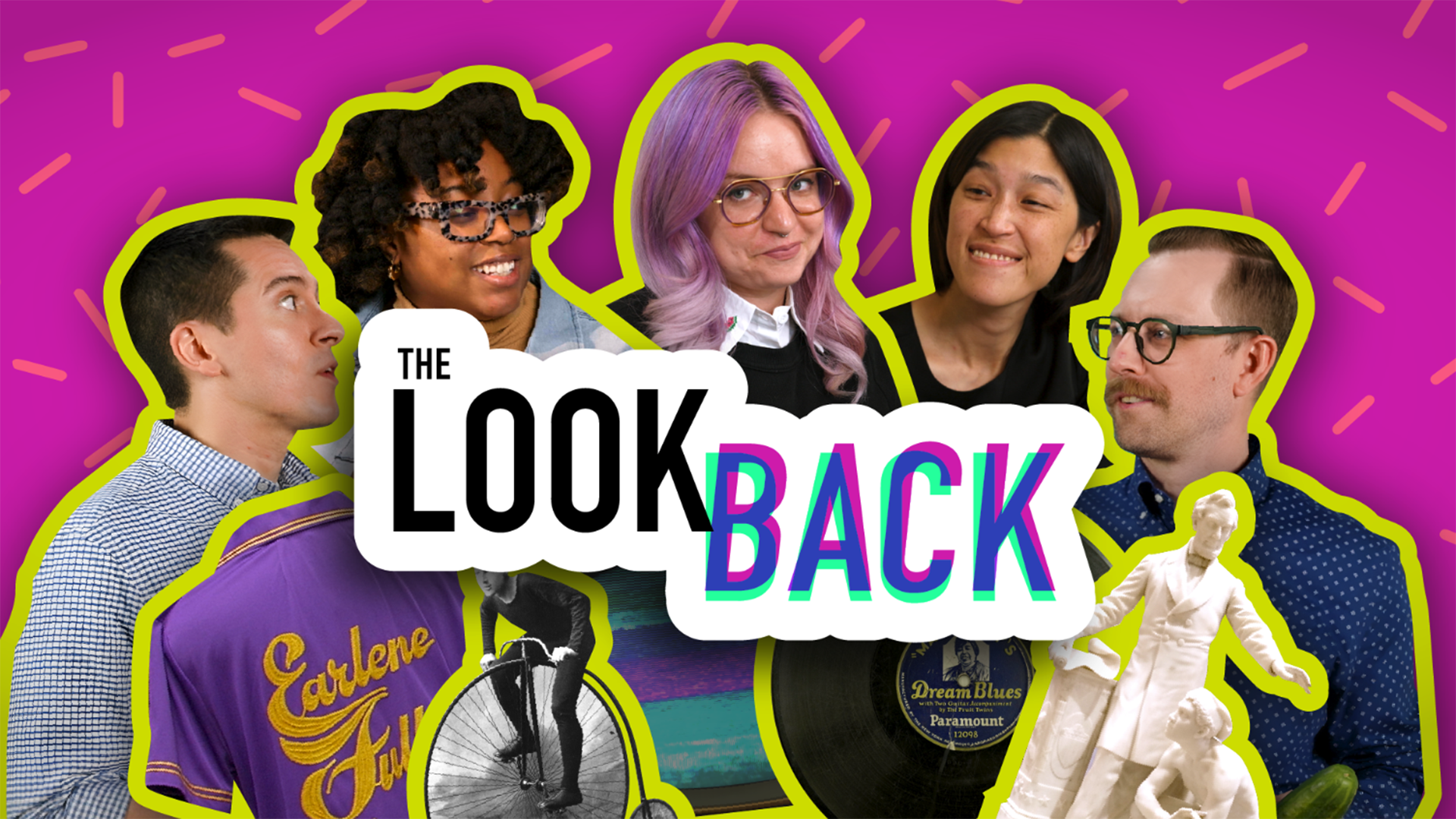
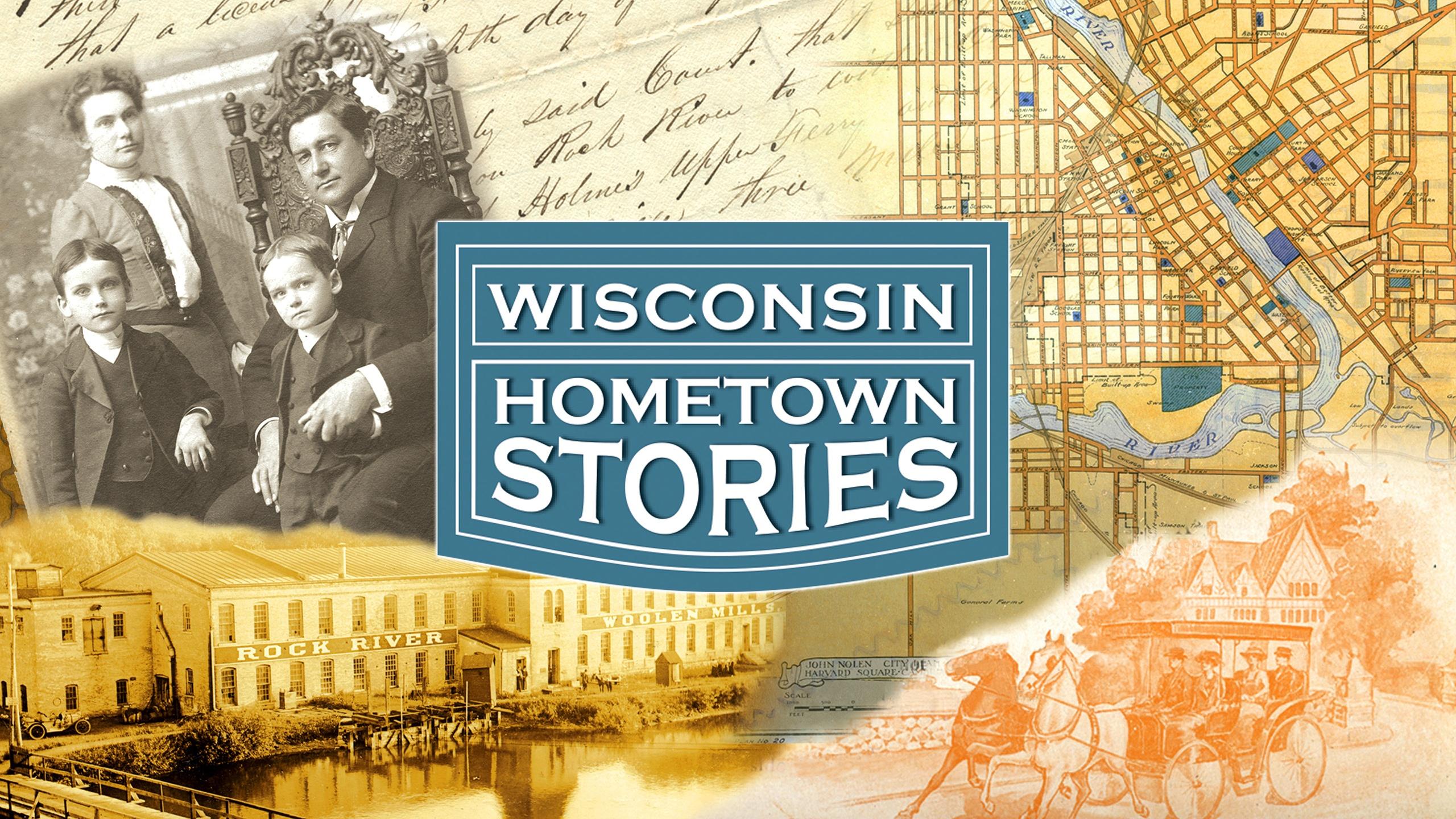
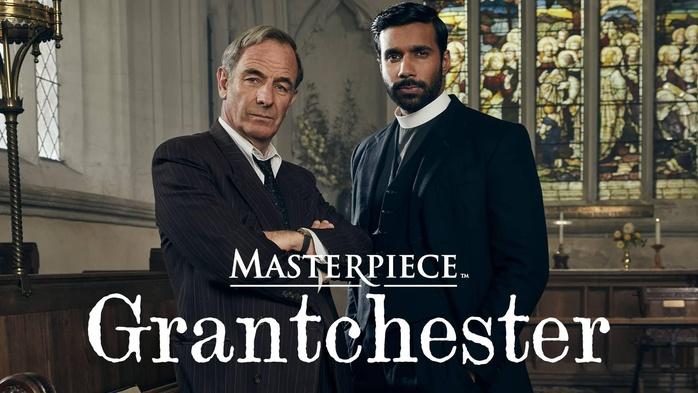


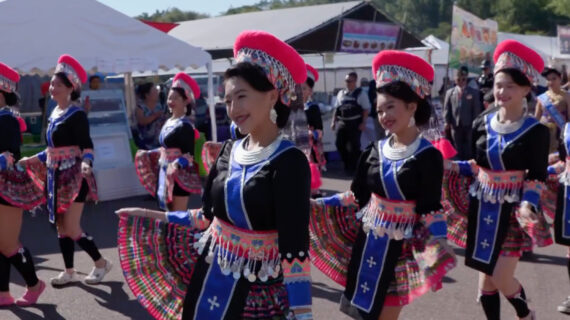
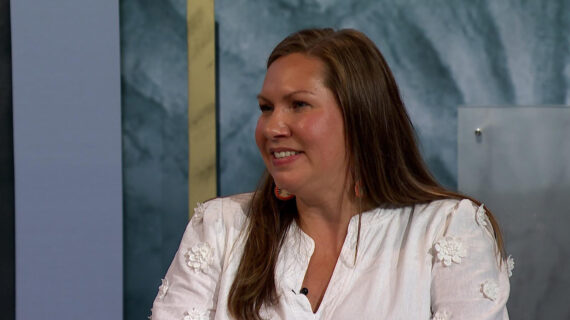


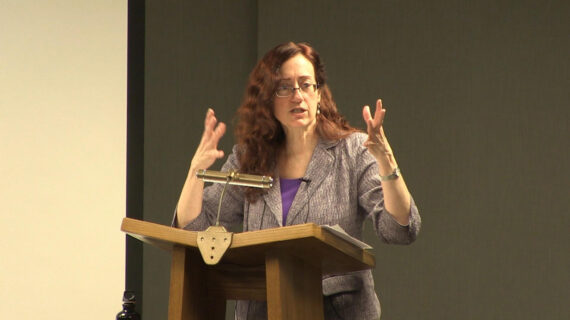
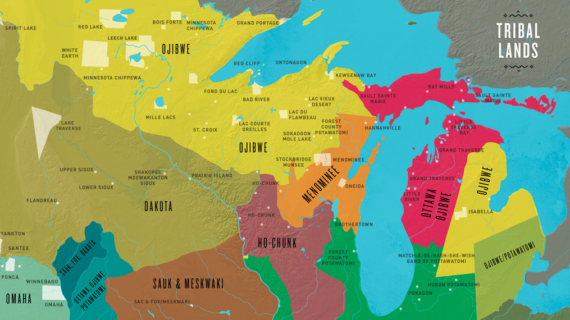
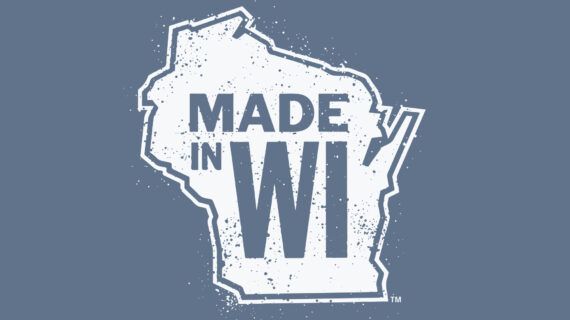
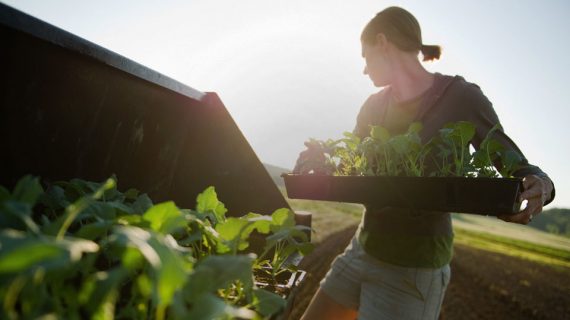
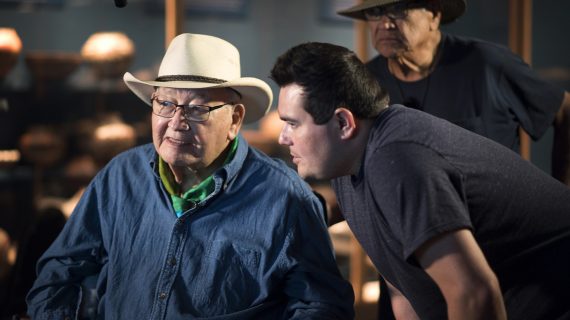

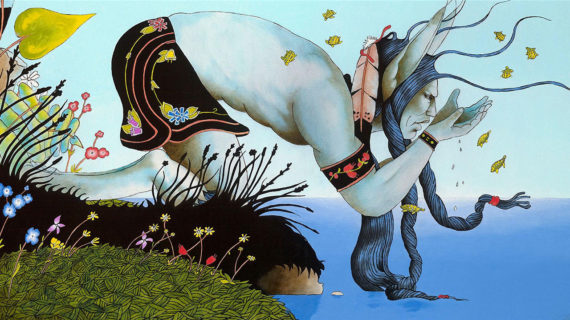

Follow Us